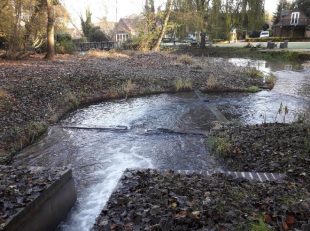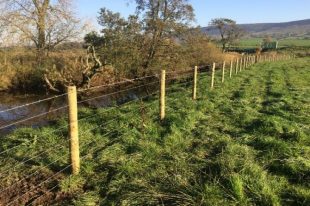
Anglers often ask us about how we spend the money raised from the sale of fishing licences. Whenever faced with this question, I pause to reflect on the wide range of activities this income pays for in order to protect and improve fish stocks and fisheries.
Our work includes saving fish if there is too much water (floods) or if there is not enough (drought). We manage the impacts being caused by the climate emergency. We improve habitats for fish and provide new access and facilities for anglers. Through targeted enforcement action, and working with other organisation such as the Angling Trust, we protect stocks from illegal fishing. The list continues; we grow and restock fish; we eradicate invasive species and, working with partners, we encourage people to take up fishing for the first time or to return after a break.
For people who want more details there is an annual report which provides more information on everything we do in fisheries.
The number of licences we sell determines our budget and the amount of fisheries work we can do. Recent years have seen the number of anglers falling. This has resulted in us needing to adopt new ways of working and in particular an emphasis on joining up with partners who have similar interests and who can contribute time or additional funds.
The Fisheries Improvement Programme (FIP), is a good example of how we do this.
It was first established in 2015 and involves us reinvesting licence payers money into projects which benefit anglers and fish stocks. Over the last 5 years we have spent £3.5m in this way and completed 500 projects across the length and breadth of the country. We have worked with hundreds of different partners from organisations with a national presence such as the Rivers Trust, the Wild Trout Trust, the Canal and River Trust and the Angling Trust to small angling clubs and local community groups. We estimate these partners have themselves contributed over £5.5m to the programme in this time.
The result is that long lengths of river have been improved and more fish are available for anglers to catch. As a snapshot, in 2017 we reported that the FIP enhanced 133km of rivers and we removed 23 barriers to natural fish passage. An estimated 120,000 anglers benefitted from these works.
Examples:


We remain committed to continuing with this programme of supporting fisheries partners and funding co-delivered projects. Through this work we are contributing to the Government’s 25 year Environment Plan and wellbeing agenda as well as supporting the aims of the new National Angling Strategy.
In 2020 the priorities for projects we will fund are:
- Coarse, trout and eel habitat and passage: these are the key constraints for good fish populations, addressing them will result in more sustainable stocks and improved river connectivity.
- Angling access and facilities: platforms, pegs and pathways for rivers and stillwaters. Ensuring the needs of less able bodied anglers are considered. Especially developing community and urban fisheries.
- Increasing fisheries resilience: reduce the impact on fish and fisheries of the prolonged period of dry weather. Also helping smaller clubs to help themselves through providing equipment and materials for small scale works.
All the projects we fund must demonstrate benefits for anglers and those we work with need to provide evidence of additional funds secured or 'in-kind' volunteer support.
Looking forward we want to hear from more clubs and fisheries about the work and projects they would like to see undertaken, as well as contacting your local fisheries officer to discuss ideas we are inviting people to register their project interests via the Angling Trust website.
The Fisheries Improvement Programme provides us with a means of undertaking works that result in local outcomes for anglers who buy a fishing licence. The more people who go fishing, the more projects we can deliver. Please visit our website to buy your licence today!

6 comments
Comment by Michael kew posted on
Just buy your licence excellent value for a years fishing tight lines everyone
Comment by Rodney Lee posted on
Not so sure about the excellent value. The EA do NOT fight our corner. They allow water companies to pollute waterways with impunity. Water companies make millions without any regard for the waste they pour into our rivers.
Comment by Rodney Lee posted on
EA should be campaigning for water companies to invest and prevent pollution instead of allowing them to do it. You should also lend weight to anglers and associations who need to control predators. Sick rivers which cannot support fry recruitment cannot support predators such as cormorants, gooseanders, mink and otters. Wake Up!
Comment by Rodney Lee posted on
Why do you think Angler numbers are decreasing? Er... duh..... cos the rivers dont have any fish in them anymore that's why.
Comment by Rodney Lee posted on
Why do you think Angler numbers are decreasing? Er... duh..... cos the rivers dont have any fish in them anymore that's why.
Comment by charlie dickinson posted on
If you look at survey maps circa 1900 you will see many areas of river marked "Towing Path" that were used for drawing barge by horse.
These paths became disused through mechanisation and have over the years become overgrown and inaccessible.
Ease of access is one of the key elements to the parcticipation in angling and as such, a key element in encouraging newcomers. One of the main aims in the Nation Angling Strategy must adopt is the restoration of the access on many miles of river that have been lost through neglect.
Of course none of this can be done without funding, but i'm sure we could get the help of a few intrested parties, like anglers, angling clubs, fishing tackle shops and the many angling equipment manufacters whose business rely on people going fishing.